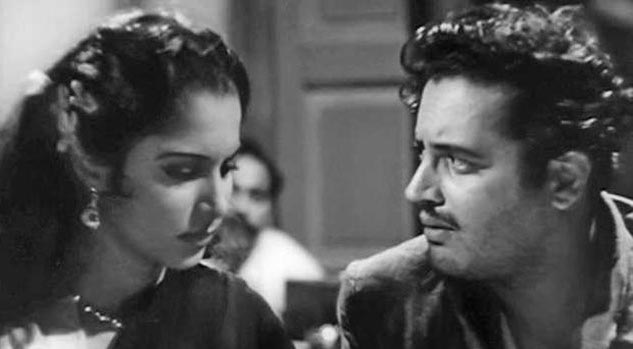Pyaasa’s ingeniously creative and sensitive portrayal of conflicts in society, both at ideological as well as emotional levels gave it an all-time classic and an iconic status.
It may come as a surprise, but Pyaasa, released in February 1957 is the only Hindi film to have figured in the Time magazine’s list of 100 greatest movies of the twentieth century. It’s ingeniously creative and sensitive portrayal of conflicts in society, both at ideological as well as emotional levels not only gave Pyaasa an all-time classic and an iconic status, it also turned out to be a masterpiece of a movie.
It was Sahir Ludhianvi’s ‘Talkhiyan’, which had inspired Guru Dutt to picturize the conflicts in the life of an ideology driven poet. And that’s how ‘Kashmakash’ took shape. While Guru Dutt remained busy with bubbly comedies and crime thrillers like Mr & Mrs. 55, Aar Paar and CID etc., Kashmakash always remained at the back of his mind. Later, this was given the form of a screenplay in black and white by Abrar Alvi and the movie was ready to be launched with Dilip Kumar in the lead role. But Dilip having backed out, Guru Dutt fortuitously, stepped in to take the lead at the last moment. Since there was a romantic angle too, the title of the film was changed from Kashmakash to Pyaasa, as perhaps kashmakash was only about struggle and conflicts, while Pyaasa conveyed thirst, yearning and being desirous.
Guru Dutt, the Director, was at the heart of Pyaasa and his ingenuity of conceiving a scene with delicacy is visible throughout, as the story unfolds on screen. Picturization of songs, close up shots with measured dialogue delivery, superb camera angles highlighting the subtleness of black and white cinematography, all go into the making of this masterpiece. Guru Dutt had an exceptional understanding of the medium and he used it fully to create an aura and leave a lasting impact on the audience. While acting, he always gave a lot of importance to highlight the role of eyes for an expression of feelings. In Pyaasa, while picturizing the song ‘Jaane kya tune kahi’ Waheeda Rehman without saying anything conveys all through her eyes to invite Guru Dutt. Similarly, in the song sequence ‘Aaj sajan mohe ang laga lo’ Waheeda Rehman emotes and expresses her love , longing and helplessness all through her eyes.
If Guru Dutt was the heart of Pyaasa, Sahir Ludhianvi was definitely its soul. The youthful rebel in Sahir and his imagery of gaps between the haves and have-nots besides emotional dilemmas faced by the poor and the anguished often led people to identify him with Leftists but he was essentially a crusader against the false and hollow values of society. While most of the Urdu poetry of those days revolved around women, beauty and wine, Sahir addressed the fundamental problems of human suffering and injustice with heightened realism whether in society or in love. As Pyaasa was a take off from Kashmakash which was inspired by Talkhiyaan, at times it was thought that Pyaasa was a biopic on Sahir’s life, but there were just a few shades of it.
At the time of it’s release, Pyaasa was not expected to be a commercial success. But within the first week itself, despite the absence of any big banner publicity, the tide had turned with unprecedented crowds ringing the box office. There was a magical and a magnetic pull in the lyrics of Sahir which had somewhere touched a delicate cord with a direct and a realistic connect with the people. So much so that the posters of the film for the first week had the usual blow up of Guru Dutt and Waheeda Rehman while the credit for lyrics and music was given in a thin line at the bottom. But, this was to change very soon and after the third or fourth week at Regal Delhi, the posters of Pyaasa only had Sahir’s poetry.
Good lyrics are not only an expression of feelings and relationships in films, they sometimes help carry the story forward. But even good lyrics in films need to be set to a musical score lest they would appear like a stage mushaira. And this is where the role of the music director comes in. It is obvious that both the lyricist and the music director have to work in harmony to create a perfect composition. The team of S.D Burman and Sahir did 17 films together, Pyaasa being their 18th.But as it happens often that artists at the very top develop strong likes and whims of their own. In Pyaasa both the lyricist and the maestro were at the pinnacle of their careers having delivered one hit film after another, but a misunderstanding leading to a clash of egos created a rift and the two never teamed up again. Today, even if Pyaasa may not have been seen by many in the current generation, it continues to live through its lyrics and music.

